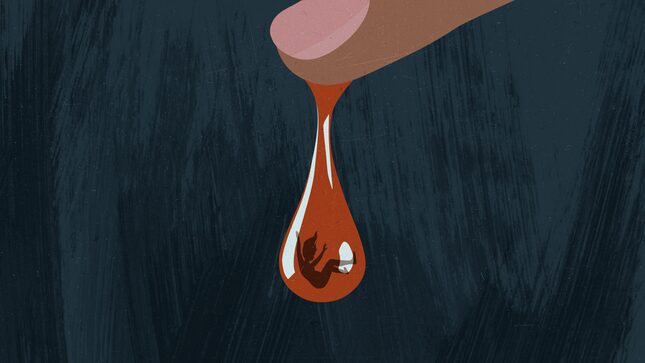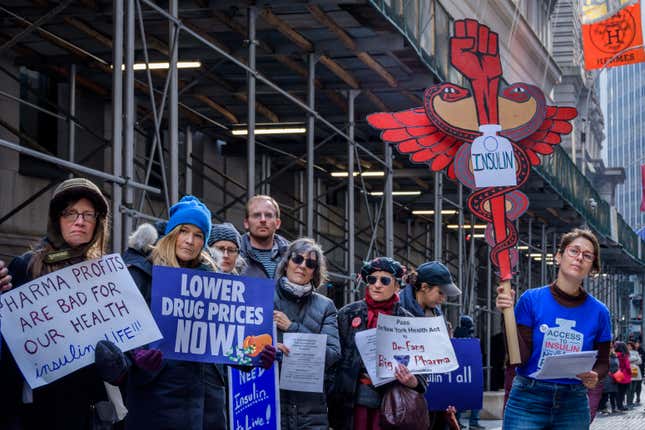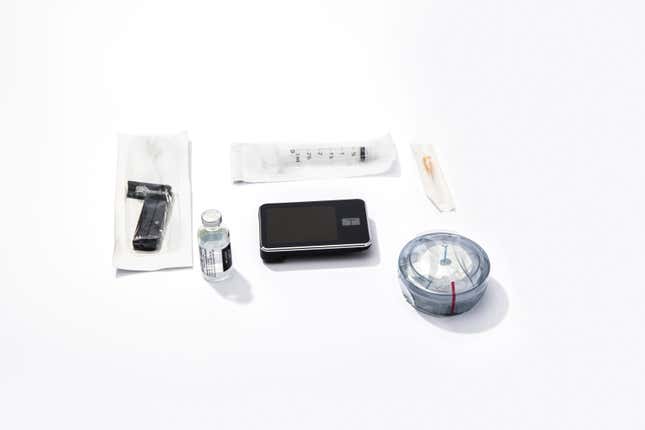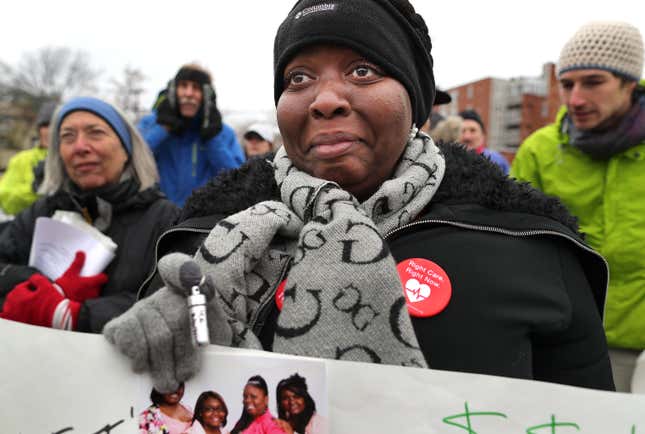Abortion Bans Will Kill Diabetic People
Already hit with crushing insulin prices and health issues, diabetics say the end of Roe v. Wade scares the hell out of them—for good reason.
In DepthIn Depth
Illustration: Rebecca Fassola
Diabetics in America are accustomed to indifference and discrimination. Before insulin was first synthesized a hundred years ago, we were condemned to “starvation diets” and an excruciating death. For too many this is still reality. When gestures towards caring are made, coverage coalesces around white, wealthy, thin, type 1 diabetic celebrities, usually for wearing medical devices that are unaffordable to most. Democrats use us to campaign, while making deals that benefit pharmaceutical companies behind closed doors. The major diabetes nonprofits take donations from the same insulin manufacturers price gouging us. As many as 40 percent of Americans who died from covid had diabetes, and diabetics were 48 times as likely as non-diabetics to have become unhoused during the pandemic. Many erroneously assume diabetics of all types “did this to ourselves.”
Now, Roe v. Wade has been overturned, and those of us living in states where most abortion procedures are illegal, who can become pregnant, who have diabetes, must endure another threat to our existence. We’re no longer living in the Steel Magnolia days of the 1980s, but for those of us whose health condition leads to high-risk pregnancies, getting knocked up is a dangerous endeavor.
Pregnancy Is Particularly Dangerous for Diabetic People
Samantha Leon and her husband decided they wanted to have a baby after four years together, when she was 22. “I’d never had any health issues or problems in my life,” she told me, “so I was just like, ‘OK, let’s have a baby!’” They got pregnant right away, but at 15 weeks Samantha received an urgent call at 7 a.m. from her OB-GYN, who was on vacation, to discuss her blood work. A1C isn’t a test routinely performed on non-diabetic pregnant people in their first trimester, but miraculously, someone in the office had accidentally ordered it, and the results clocked Samantha’s A1C at 12.5 percent: undiagnosed diabetes.
Diabetics currently make up about 11 percent of the U.S. population—a group of roughly 37.3 million (8.5 million of whom don’t even realize they’re diabetic). One recent study found non-diabetics who got covid were 40 percent more likely to develop diabetes within the year, so it seems more will be joining our astronomically expensive club. For the uninitiated, A1C is a way to measure someone’s average blood sugar level over the last three months. A non-diabetic’s A1C stays below 5.7 percent, and it’s recommended that a diabetic have an A1C of 6.5 percent or less before becoming pregnant to decrease the risk of negative outcomes for the gestating parent and their baby. Samantha’s A1C was just about double that.

Samantha went to a high-risk OB right away, who initially thought it was a mistake, according to her (ridiculous) assessment that someone who looked like Samantha couldn’t have diabetes, as Samantha recalled. A blood test quickly revealed Samantha was type 1, which the doctor explained meant she didn’t have any insulin in her system for the most crucial part of pregnancy. “By that time we already knew that it was a girl. She already had a name,” Samantha said. Still, she had to wait until she was 20 weeks along to get a scan to determine whether her undiagnosed diabetes had affected the pregnancy. In the meantime, unable to get an endocrinology appointment for a month, she was learning to dose insulin from other diabetics.
At 20 weeks, the scan revealed a serious case of congenital hydrocephalus (a condition associated with maternal diabetes): The fetus’s brain had a fluid buildup that prevented it from growing correctly. “There was something wrong with her heart, too,” Samantha said, “but the hydrocephalus—clearly you could see that her head was not formed.”
In California, where she lives, Samantha had under four weeks to decide if she wanted an abortion. After considering the risk of stillbirth or severe medical complications, and the confusion and expense of navigating a new condition—or as she told me, “what would be the least traumatic”—Samantha and her husband decided to end the pregnancy at 23 weeks, right before California’s cutoff.
To have the best chance at positive pregnancy outcomes, those of us diabetics who are healthy enough to carry a child go through an expensive, time-consuming, and emotionally exhausting process to conceive. Blood glucose that is not optimally controlled can lead to problems for the pregnant person and the fetus that, according to the Centers for Disease Control and Prevention, include birth defects, an extra large baby, C-section, preeclampsia, early birth, miscarriage, and stillbirth. Staying pregnant when faced with these complications can jeopardize our lives. Abortions can save our lives.
-

-

-

-

-

-

-

-

-

-

-

-

-

-

-

-

-

-

-

-

-

-

-

-

-

-

-

-

-

-

-

-

-

-

-

-

-

-

-

-










































